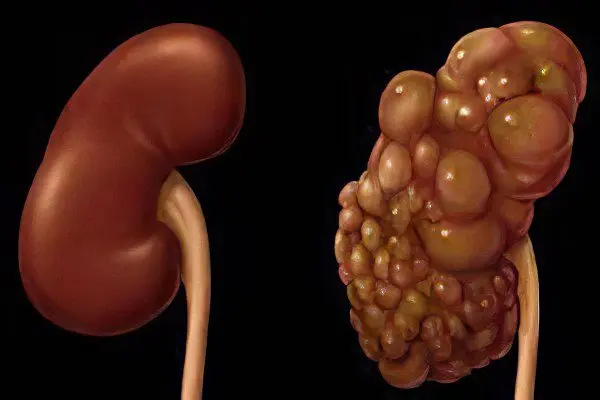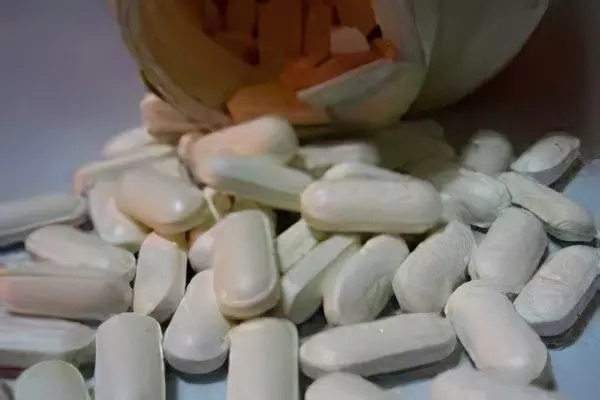Contents
Kidney buds – This is a urological disease that is characterized by the formation of a cavity formation surrounded by a capsule of connective tissue filled with fluid. It looks like a circle or oval, it is formed more often on one side, less often on two. This disease is equally common among both males and females, but is more common in people over forty years of age. It is mostly benign and is the most common type of renal tumor (it is detected in about 70% of patients). As it grows, the formation can reach 10 or more centimeters.
There is an increased risk of developing a kidney cyst if the following are present:
The older age of the patient (advanced, senile);
Hypertension, vegetovascular dystonia;
kidney injury;
Tuberculosis;
Transferred operations on the kidneys or other organs of the urinary system;
Urolithiasis disease;
Infectious diseases of the genitourinary system.
If the patient has a cyst only in the left, or only in the right kidney, we are talking about a single formation. If there are several cysts in one kidney at once, they speak of a multicystic lesion. In the event that the formations are located immediately on both sides, we are talking about polycystosis.
Signs and symptoms of a kidney cyst

Symptoms of the presence of cystic formations in the kidneys are not clear. The patient may not feel any discomfort or specific signs at all. For a long period, the disease is asymptomatic, and the cyst itself is discovered by chance during an ultrasound scan.
A person experiences certain unpleasant sensations only when the cyst begins to grow to such an extent that it already presses on neighboring organs and tissues. In this case, the following symptoms are most often observed:
Pain in the lumbar region, which intensifies after lifting weights or with sudden body movements;
Renal hypertension (increased indicators of “lower” pressure);
The presence of blood in the urine;
Violation of blood circulation in the affected kidney;
Impaired outflow of urine from a diseased kidney;
Dull pain in the ureter, bladder;
Kidney enlargement.
If the patient’s immunity is weak, an infection can join and provoke an inflammatory process. In this case, the patient will feel all the signs of an infectious lesion of the kidney (pyelonephritis): general weakness, painful and frequent urination, aching constant girdle pain, fever. In addition, when examining urine tests, an increased number of leukocytes is found in it, cylinders and erythrocytes can also be detected.
In the absence of timely adequate treatment, the patient may develop chronic renal failure. This pathology is manifested by polyuria (very frequent urge to empty the bladder), weakness, thirst, high blood pressure. If the size of the cyst is quite large, it can compress not only the ureters and renal pelvis, but also important vessels. This, in turn, can eventually lead to ischemia and atrophy of the affected organ.
Causes of a kidney cyst
Despite the fact that the cyst of the right and left kidney is not such a rarity, the causes of this pathology have not yet been fully elucidated by scientists and doctors. Most often, these are congenital formations, but they can also form after birth.
It is generally accepted that kidney cysts occur due to hereditary, traumatic or infectious factors. And the difficulty of reliably identifying the causes is further aggravated by the fact that the disease, as already mentioned, proceeds without specific symptoms.
The very process of cyst formation occurs in connection with their development from the renal tubules, which lose contact with other similar structures, after filling with fluid and increasing in size to a couple of millimeters. Such formations develop due to the increased growth of epithelial cells, which lines the inside of the renal tubules.
Types of kidney cysts
Kidney cysts are classified according to different criteria. So, by origin they are:
congenital;
Acquired.
According to the nature of the organ damage:
Multiple;
Single
According to the quality of the fluid inside the formation:
Hemorrhagic (fluid mixed with blood);
serous;
Purulent (develop as a result of the addition of inflammation due to infection).
There are also simple and complex cysts. A simple kidney cyst is a spherical cavity filled with a clear liquid. This type of cyst is the most common, and at the same time they are the safest, since the risk of their degeneration into cancer is extremely low. This pathology is often asymptomatic. Complex cysts differ from simple ones in that they contain several chambers, segments, and the contours of their surface are uneven. In the case when there are thickened partitions in the cavity of such a cyst, the risk of its oncogenicity increases. In addition, calcified deposits are often found in them. Another certain area of a complex cyst can be supplied with blood. And since the vessels usually braid cancerous tumors, this once again indicates the possible degeneration of a complex kidney cyst into cancer.
In addition, cysts are distinguished, depending on their structure:
sinus cysts of the kidneys;
parenchymal cyst of the kidney;
solitary cyst of the kidney.
Let’s take a closer look at each of these types.
Sinus cysts of the kidneys, which are also called parapelvic, refer to simple cysts. Such formations are located at the gates of the renal sinus (hence its name) or the kidney itself. Such a pathological bubble is formed as a result of an increase in the lumens of the lymphatic vessels that cross the kidney in a place near the pelvis, but not adjacent to it. They are a cavity filled with a transparent yellowish liquid, in some cases with blood impurities. Why sinus cysts form is not completely understood. This pathology occurs most often in females over 50 years of age.
The sinus cyst of the kidneys provokes a pain symptom in the patient, as well as urination disorders, and the urine itself may be red due to the presence of blood in it. The patient often suffers from high blood pressure.
Parenchymal cyst of the kidney – this is most often a congenital pathology, less often – acquired. Moreover, if a person was born with this formation in the kidney, then it may well disappear on its own, resolve itself. This is a formation, the chamber of which is located directly in the parenchyma of the kidney, which is why the name of this cyst arose. Most often, inside the chamber is a serous fluid, in composition and appearance resembling blood plasma. Sometimes, however, there are parenchymal cysts filled with hemorrhagic contents (with blood impurities). This type of cyst pathology can also be single, multicystic and polycystic.
Congenital parenchymal cysts most often occur in connection with certain disorders in the first and second trimester of pregnancy (embryogenesis), when all organs are formed and laid down, including the kidneys. In addition, such congenital pathologies are accompanied by some other diseases of the genitourinary system. Another reason for the development of parenchymal cysts (congenital) is genetic, intrauterine dysplasia of the kidney parenchyma.
Acquired parenchymal cysts are more common in men over 50 years of age. They can develop due to obstruction (clogging) of the nephron tubules by micropolyps, urea salts or connective tissue. In 2/3 of cases, the parenchymal cyst does not show any symptoms.
Solitary kidney cyst – This is one of the options for a simple cyst, which has a rounded shape. This formation is not connected with the collector (excretory) system of the organ, it does not have inclusions, partitions. Such a cyst is located in the parenchyma (cortical layer) of the kidney, more often in one kidney. But there are also solitary cysts located in the medullary layer of the organ, which may have hemorrhagic or purulent contents in the middle (in case of kidney injury).
Treatment of a kidney cyst

Before prescribing this or that type of treatment, the doctor, if a kidney cyst is suspected, directs the patient to undergo a comprehensive examination. The diagnosis is established taking into account the patient’s complaints. Polycystic is determined by palpation, since in this case the size of the kidneys increases, and they have a tuberous structure. When conducting laboratory tests, anemia and a decrease in functional proteins are detected in the blood, creatinine and urea increase. In the urine, as was said, leukocytes, erythrocytes are found, the specific gravity of urine decreases, as a result of renal failure.
The main and indispensable way to determine cysts in the kidneys today is ultrasound. It is this method that makes it possible to identify the localization of formations, their size, number and connection with adjacent organs. If it is necessary to conduct a differential diagnosis with renal tumors, a method of contrast radiography (angiography, excretory urography) can also be proposed. The cyst in this case manifests itself as a formation that does not contain blood vessels. One of the modern methods that can be additionally applied is computed tomography (CT).
Only a specialist urologist with full knowledge of the matter will be able to explain in detail to the patient what is the danger of cystic formations in the kidneys. But, in general, the main risk that this pathology is fraught with is the possibility of other diseases.
Conservative drug treatment of a kidney cyst is rather limited in its capabilities, but in this way it is possible to correct the general condition of the patient without removing the cyst itself. Most often, symptomatic treatment is carried out, which consists in taking drugs that reduce blood pressure, relieve pain in the lumbar region, relieve inflammation and normalize the normal outflow of urine. In the event of a bacterial infection, the patient is prescribed antibiotics.
In the absence of the necessary treatment, a kidney cyst can provoke quite serious complications – suppuration, rupture of the capsule, hemorrhage. In this case, an emergency operation is necessary. If the diameter of the formation is not more than 5 cm and it does not cause a violation of the outflow of urine and blood circulation, such a cyst is simply observed. Planned surgical intervention is offered in such cases:
The patient is young or middle age;
The cyst provokes severe pain;
The size of the cyst is large, it compresses neighboring organs;
The patient has arterial hypertension;
There is renal bleeding;
The cyst leads to a violation of the outflow of urine;
There is a risk of rupture of the cyst membranes;
The formation is infected with bacteria;
The cyst contains a cancerous tumor.
In an uncomplicated cyst, it may be drained. The procedure is carried out under the control of an ultrasound machine. A needle is inserted into the cyst, through which fluid is pumped out. After that, a sclerosing substance is introduced into it, by means of which its walls stick together. The disadvantage of this type of operation is the fact that there is a risk of the contents of the cyst getting into the kidney tissue, which can cause infection and sepsis. In some cases, with a particularly large kidney cyst, severe tissue death, or with an oncological nature, a nephrectomy (removal of the kidney) may be indicated to the patient.
Contraindications to the operation to remove the cyst:
The patient does not feel discomfort due to the presence of a cyst in the kidney;
The outflow of urine is not disturbed due to the cyst;
Blood clotting disorders and diseases of the blood system;
Severe comorbidities in the patient.
In general, there are several types of surgical intervention that are used to treat kidney cysts:
Cyst biopsy;
Enucleation (husking) of the cyst;
Resection of the kidney (removal of the formation with a part of the kidney tissue, while preserving the organ);
cyst resection;
Nephrectomy (complete removal of the kidney).
Surgery to remove a kidney cyst is as dangerous as any other type of surgery. With any of its listed types, various complications are possible associated with damage to the cavitary system of the kidney, organ vessels, etc. Among them, the most common are:
urinary streaks;
Accession of an infection;
Bleeding
Divergence of seams.
In general, the treatment of cysts is a rather complicated and lengthy process.
Laparoscopy (removal of a kidney cyst)
Removal of a cyst of the left and right kidney through laparoscopic surgery is a low-traumatic, modern method, thanks to which pathological formations are completely removed.
If the cyst is located in the parenchyma of the kidney and there is a high risk of damage to the collector system of the organ, the patient will be warned without fail that during the operation a decision may be made to expand the surgical field. You may need a kidney resection, cyst exfoliation, or even removal of an organ, nephrectomy.
The technique of laparoscopic surgery consists in introducing a gaseous substance into the operated field in order to expand this very field and increase the space for manipulations. After that, a laparoscope (or endoscope) is inserted there through punctures-cuts, of which there are usually three.
After the introduction of trocars into the retroperitoneal space and removal of the cystic formation, they are removed, and the incisions are sutured. Special drainage tubes are brought to the place where the cyst was removed from. In addition, if there is the slightest suggestion of a violation of the outflow of urine in the postoperative period, a stent is inserted into the ureter to restore the normal function of the urinary system.
In addition to removing a kidney cyst, it is possible to perform a laparoscopic resection of the kidney – removal of the pathology along with a certain amount of organ tissue. In this case, the kidney is preserved. Indications for such an intervention are the size of the formation up to 3 cm, with an extraorganic location (outside the kidney tissues). A contraindication is the serious condition of the patient and additional diseases in which there is a risk of complications during the operation, as well as a violation of blood clotting.
After a laparoscopic operation to remove a kidney cyst, the patient is treated with antibiotics and painkillers. If necessary, anti-inflammatory drugs may be additionally prescribed. The sutures are removed 7-8 days after the operation. To prevent the development of complications in the postoperative period (intestinal paresis, pneumonia, etc.), the patient is recommended early activation and breathing exercises.
Diet for kidney cyst

With a kidney disease such as a cyst, in addition to traditional drug treatment and surgery, the patient is also shown a special diet. It includes the basic principles of nutrition, including:
Restriction of salt intake. This principle is suitable for those patients in whom a cyst of one or both kidneys provokes a malfunction of the organ, thus leading to its insufficiency. It is for such patients that it is necessary to reduce to the maximum or completely abandon the use of salty foods. If the patient does not face kidney failure, he does not have to give up this seasoning.
Fluid control. It is necessary to limit the amount of fluid consumed by those patients in whom a cyst in the kidney is accompanied by peripheral edema, symptoms of heart failure (swelling in the legs, shortness of breath), and high blood pressure. If the neoplasm in the kidney is not supported by similar symptoms, you should not limit the amount of water and other liquids you drink.
Refusal of “forbidden” food. In addition to a special water regimen and restriction of salt intake, patients who have a cyst of the right or left kidney must be excluded from the diet of many foods. These include: spicy dishes (chili seasoning, for example), fried and salty, any alcoholic drinks and especially beer. You also need to give up chocolate, seafood, coffee and other foods that can have an irritating effect. In addition, smoking, both active and passive, has an extremely negative effect on kidney disease.
Limiting the intake of protein foods. Patients suffering from kidney disease are aware of the dangers of protein foods for their body. If a lot of this substance enters the patient’s body with food, nitrogen metabolism products will be released in large quantities: guanidine, creatinine, uric acid, polyamine, methylguanidine. These products are especially toxic, so a patient who has a cyst of the right and left kidney should carefully limit the amount of protein food consumed to facilitate the functioning of the organs. Thus, the release of toxins is reduced, which is especially important in the later stages of kidney failure.
Compliance with a special diet for diseases of the urinary tract, including the presence of kidney cysts, is one of the important components in the treatment of these pathologies. This does not mean that diet alone can cure such diseases. Therefore, while systematically following a diet, the patient must also follow all the doctor’s recommendations and control the disease.









